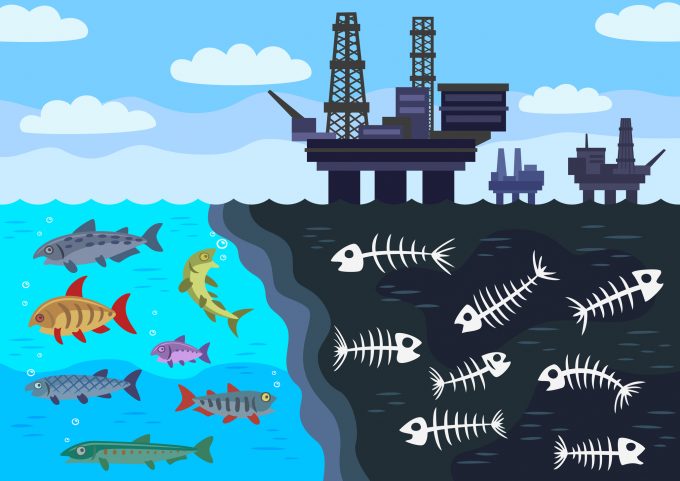The Loadstar explains: onboard carbon capture and storage
So, what’s new in fuels, then? Amid the battleground of future fuels, a new technology is ...
GM: RAISING THE ROOF GGM: IN FULL THROTTLE GZIM: MAERSK BOOST KNIN: READ-ACROSSMAERSK: NOT ENOUGHMAERSK: GUIDANCE UPGRADEZIM: ROLLERCOASTERCAT: HEAVY DUTYMAERSK: CATCHING UP PG: DESTOCKING PATTERNSPG: HEALTH CHECKWTC: THE FALLGXO: DEFENSIVE FWRD: RALLYING ON TAKEOVER TALKODFL: STEADY YIELDVW: NEW MODEL NEEDEDWTC: TAKING PROFIT
GM: RAISING THE ROOF GGM: IN FULL THROTTLE GZIM: MAERSK BOOST KNIN: READ-ACROSSMAERSK: NOT ENOUGHMAERSK: GUIDANCE UPGRADEZIM: ROLLERCOASTERCAT: HEAVY DUTYMAERSK: CATCHING UP PG: DESTOCKING PATTERNSPG: HEALTH CHECKWTC: THE FALLGXO: DEFENSIVE FWRD: RALLYING ON TAKEOVER TALKODFL: STEADY YIELDVW: NEW MODEL NEEDEDWTC: TAKING PROFIT

So what is the truth about shipping emissions?
The IMO has decided to cut 2008 levels of greenhouse gas emissions (GHGs) by at least 50% by 2050 – but not all in the industry are convinced.
A recent comment piece in Splash 24/7, by First International chairman Paul Slater, questioned shipping’s role in climate change, calling the IMO’s proposed plan “fatuous, unrealistic and unnecessary”.
He wrote: “The CO2 issue has been grossly overstated…It has been shown that [shipping’s] CO2 is absorbed by seawater without damaging results”. He also claimed to The Loadstar that there was no evidence that polar ice was melting.
The Loadstar decided to check the facts.
Over the past 200 years, humanity has produced some 1,300 gigatons (Gt) of CO2. The world’s oceans have absorbed around 500Gt in that time. Annually, the seas can absorb around 7Gt and shipping, according to various maritime bodies, produces around 1Gt.
Lecturer in physics at Imperial College London Heather Graven agrees that seawater does absorb CO2.
“CO2 is soluble in seawater, so as we increase the CO2 in the atmosphere, more is dissolved in the ocean,” she said. “About 25% of the global total CO2 emissions are presently removed by dissolving in the ocean.
“CO2 also becomes well-mixed in the atmosphere, so the ocean is not taking up CO2 from shipping emissions preferentially compared to other emissions,” she added.
Her colleague, Marc Stettler, who lectures in transport and environment, added that discussing CO2 as the sole problem, ignored other harmful emissions from shipping, which include black carbon – a GHG linked to warming that can deposit on snow and ice and accelerate the rate at which it melts under the sun.
“This could be very significant because this would lead to an overall warming of the planet by changing the albedo [the rate at which the sun’s rays are reflected] of the earth’s surface,” said Mr Stettler. “[Furthermore] there is also a lot of sulphur in shipping fuel, which is then released to the atmosphere when the fuel is burned in the engine.
“These sulphur emissions (and other pollutants) cause significant air pollution impacts, especially around coastal areas. This is one of the main reasons why the Emissions Control Areas have been set up.”
So, CO2 does dissolve in seawater. But can it be absorbed “without any damaging results”? According to scientists, there is an impact.
Dissolving CO2 leads to chemical reactions in seawater, altering the pH – the acidity level, which can fundamentally affect the environments of ocean dwelling fauna and flora.
“The change in acidity has been observed across the oceans and it can impact marine life,” said Ms Graven. “Particularly organisms that have structures made of calcium carbonate, such as corals, because these structures are more difficult to produce when the water is more acidic.”
These processes are all perfectly natural and were happening long before humanity walked the earth. But as Mr Stettler added: “There is an equilibrium between the atmosphere and the oceans.
“Think of a drink can, which is pressurised with CO2 which is dissolved in the drink. When the can is opened, the pressure is release and the CO2 bubbles up and is released. The increasing CO2 concentrations in the earth’s atmosphere will drive more CO2 to be dissolved.”
Mr Slater’s comments do not speak for an entire industry. But they do give credence to those within it that doubt the IMO measures are important.
Comment on this article